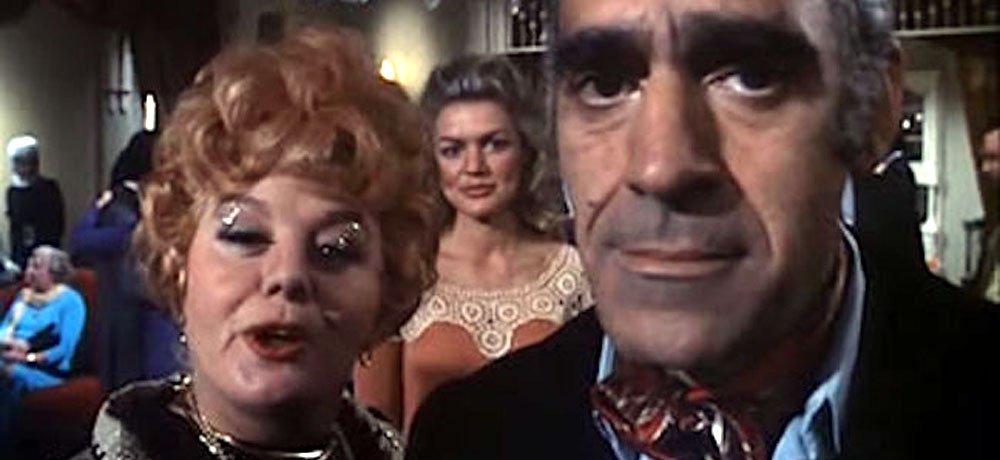
The Devil’s Daughter (Jeannot Szwarc, 1973, 74 min.)
Early in this made-for-TV horror film, a kindly old priest tells the distraught Alice Shaw, “Nothing’s so bad that God won’t forgive it.” She knows better, and we know better, because we’ve seen enough horror films to know that not only the sinner, but the sinner’s progeny, are punished for transgressions. Especially in a movie called The Devil’s Daughter.
It opens with a bang: the devil’s henchmen corner Alice (Diane Ladd), demanding that she deliver on the promise she made 20 years before: the soul of her daughter, whose father we already know (hint: it’s there in the title). When she tries to renege, the devil himself comes to collect, and it’s here that we realize there’s something special about this low-budget shocker: the devil, whose face we don’t see, comes shuffling into her room supporting himself on two of those metal canes you can buy at your local Walgreens. It’s a nice, original touch, showing that the filmmakers are using their heads, realizing that they’re working within a genre with firmly established conventions but able to carve out a little niche for themselves.
At the funeral, we meet our two principals: there’s Diane Shaw (Belinda Montgomery), who doesn’t yet know who her daddy is, and Lilith (Shelly Winters), who was mom’s friend back in the day. Soon, Diane is living at Lilith’s, where she begins to demonstrate that trait that is indispensible in a horror-movie heroine: she remains blissfully ignorant of mounting evidence of supernatural chicanery, unable to draw the conclusions that would be obvious to a child. Take her mother’s ring, which Lilith gives to her and which just so happens to bear the same insignia as the one on the staff in the huge painting of the devil that hangs over the fireplace. Even after this insignia shows up on Lilith’s favored brand of cigarettes, and on the cover of a demonic baby book—which is concealed in a secret compartment—that contains an extremely detailed record of her childhood, it’s not enough to do more than put a slight furrow in her brow. Where most people would have been in Federal Witness Protection by the 20-minute mark of the film, she, like other horror movie protagonists, gamely sticks it out, because otherwise we wouldn’t have feature-length horror films.
Maybe the problem is that Montgomery isn’t a very good actress (her time on Doogie Howser, MD notwithstanding—that was years later); perhaps there was something going on inside (like, you know, fear or suspicion) that she was unable to communicate. Even after she discovers that her mom’s ring gives her the power to hynotize children and send them into traffic, her face registers only mild alarm, not “Oh my god my mom’s ring grants me Satan’s evil power to destroy.” She’s certainly surrounded by heavy hitters: the high-profile supporting cast’s trophy shelf contains two Oscars from eight nominations, but once you get away from Ladd (unrecognizable), Joseph Cotten (really great as a kindly, helpful judge), and Winters (enjoyably bonkers), the pickings get slim. The filmmaking prowess is lacking, too: cinematographer J.J. Jones has obviously seen Dutch (tilted) angles in other horror films, but he hasn’t figured out exactly why those shots work sometimes and not at others, so he sprinkles them through the film at random, sometimes switching to one in the middle of a shot.
Overall, though, this is a fine, often inventive diversion. The filmmakers have seen enough horror films to know which ones are worth stealing from, and their primary influence is the uneasy horror/comedy blend of Roman Polanski’s Rosemary’s Baby; this film could be seen as a continuation of that deliciously nihilistic cornerstone of the genre. But there are creative borrowings from other notable films (I detect a bit of Aldo Lada’s giallo Short Night of Glass Dolls, for example), along with enough originality to make me surprised this never saw a theatrical run.

